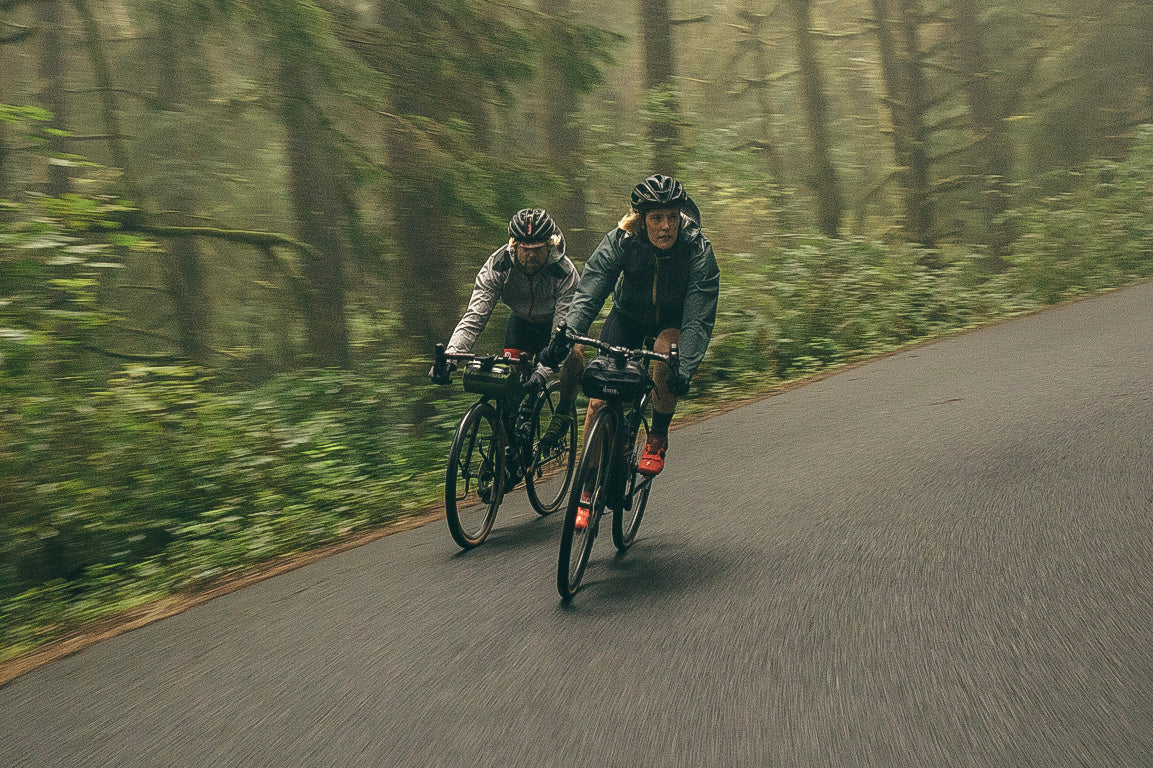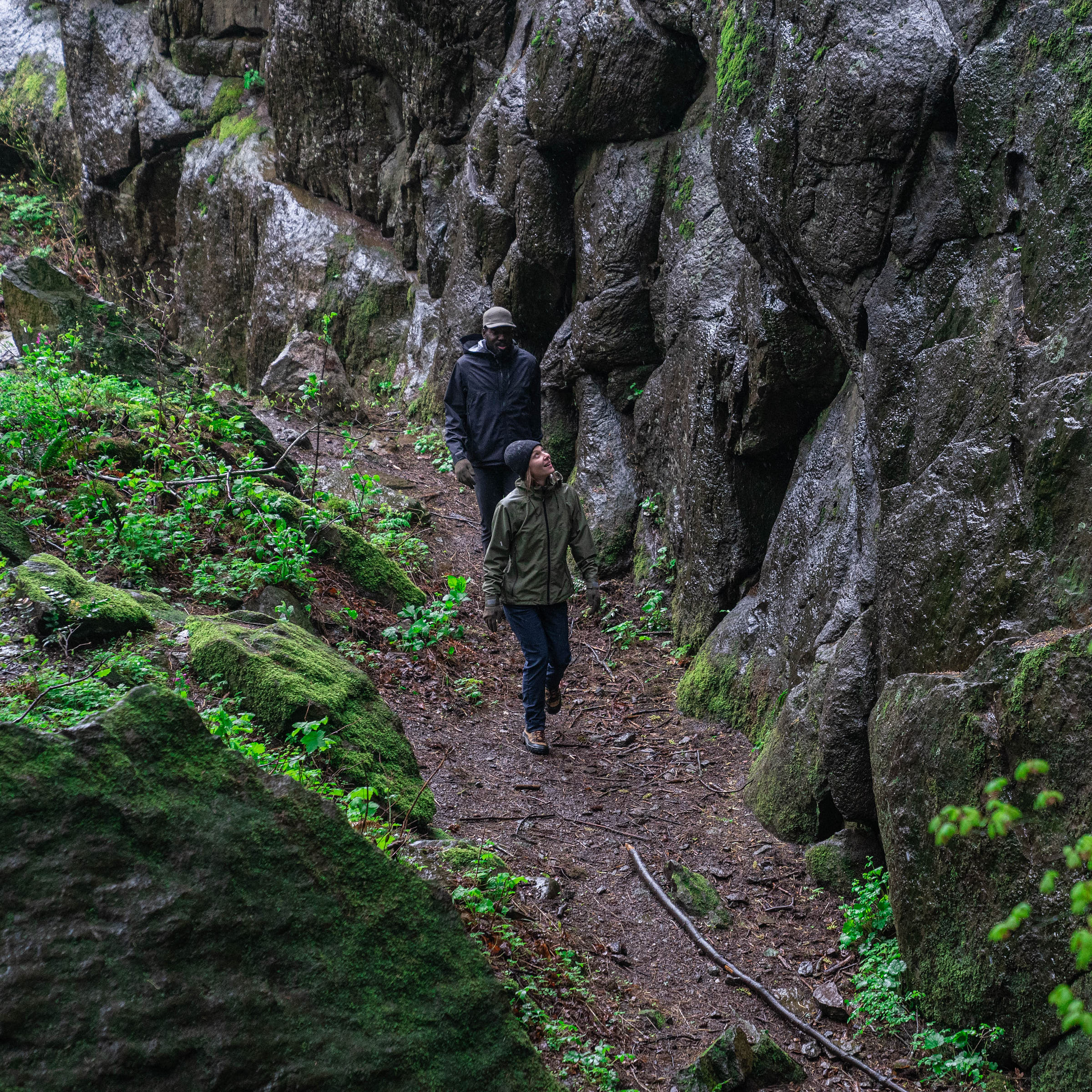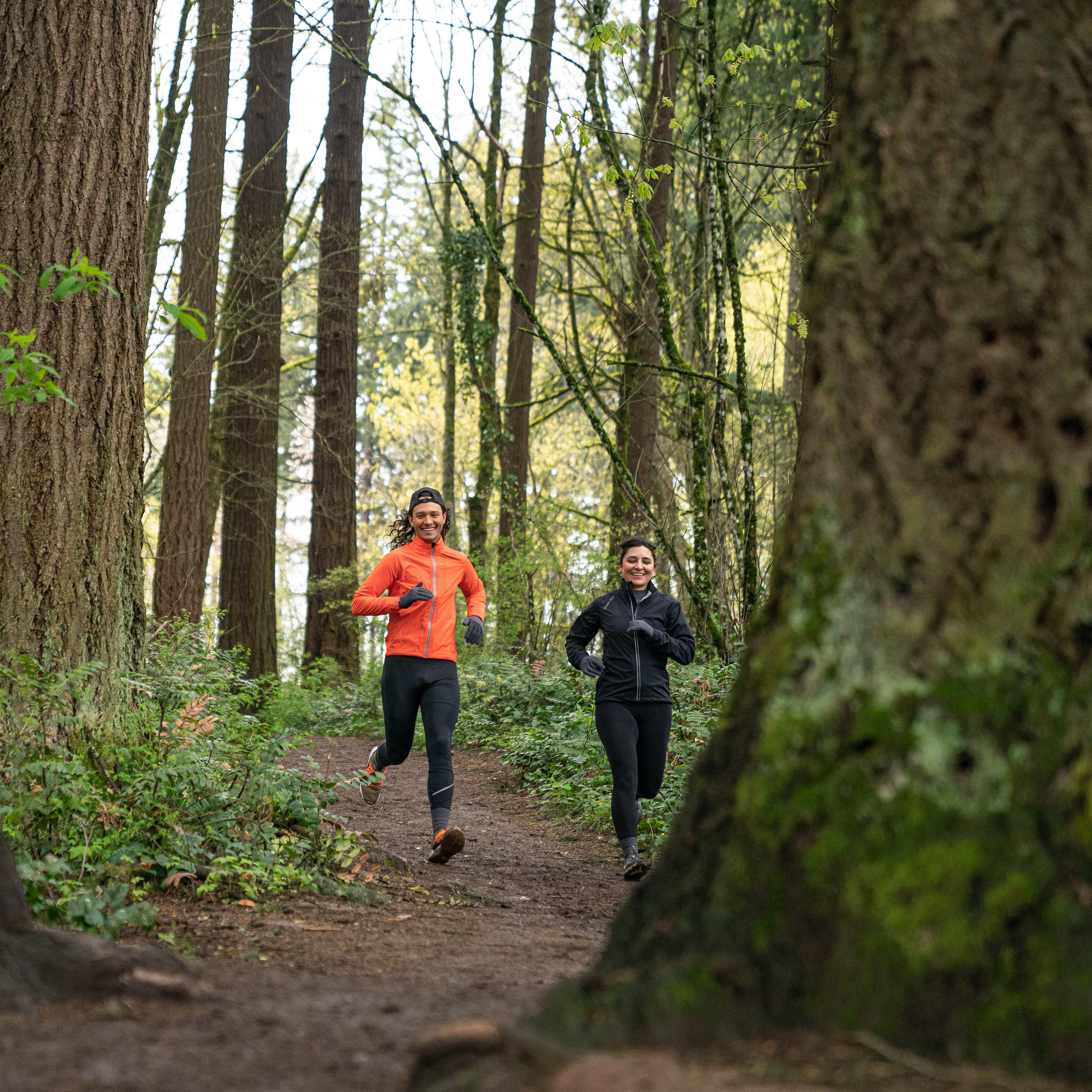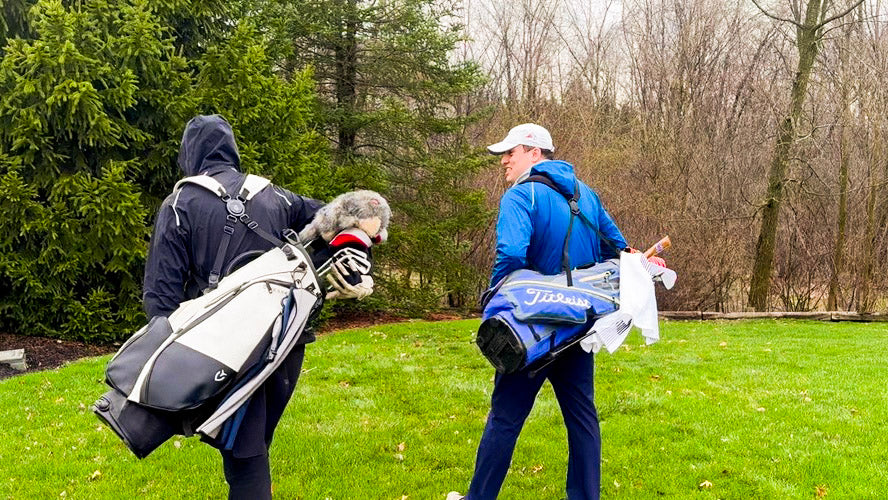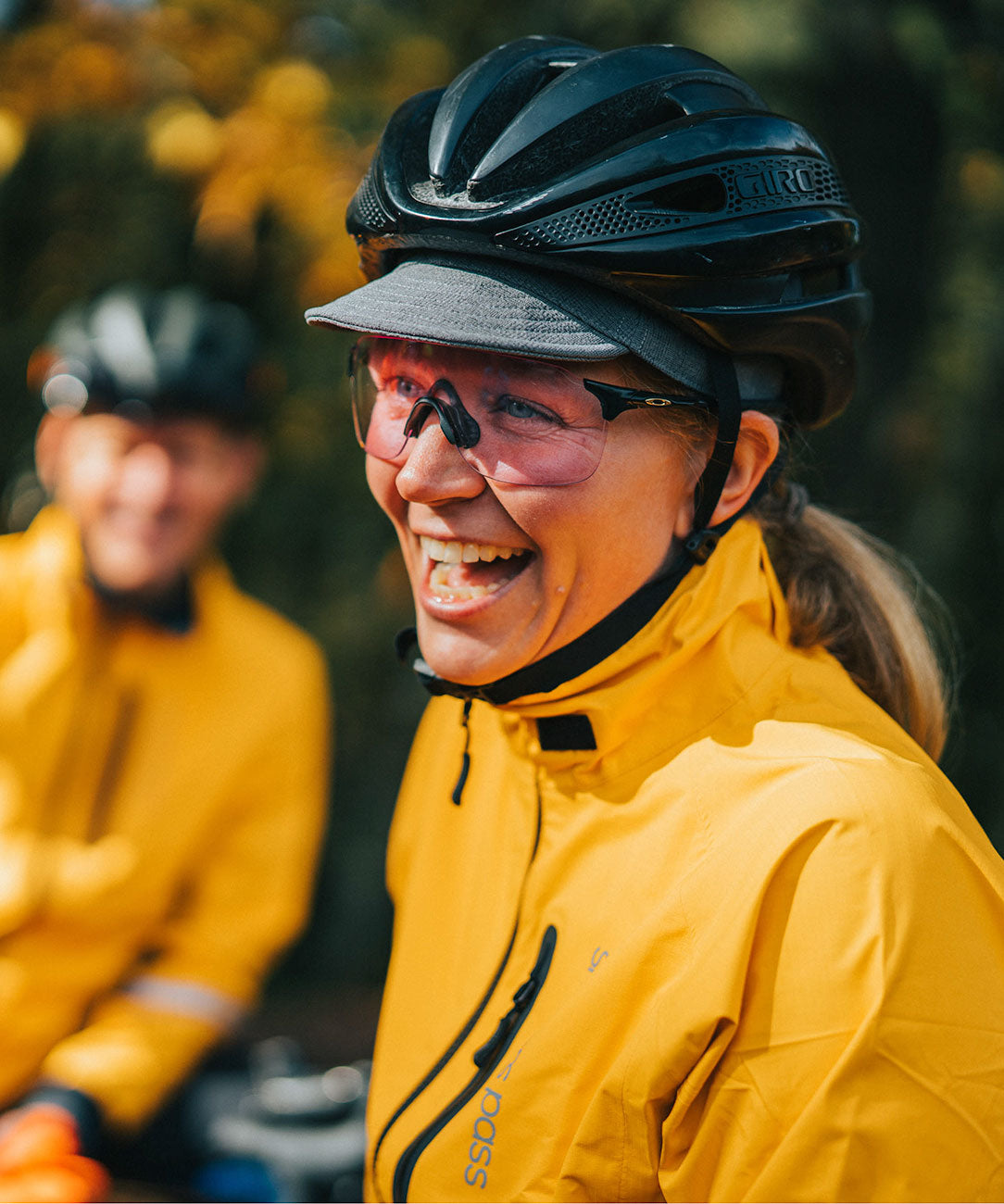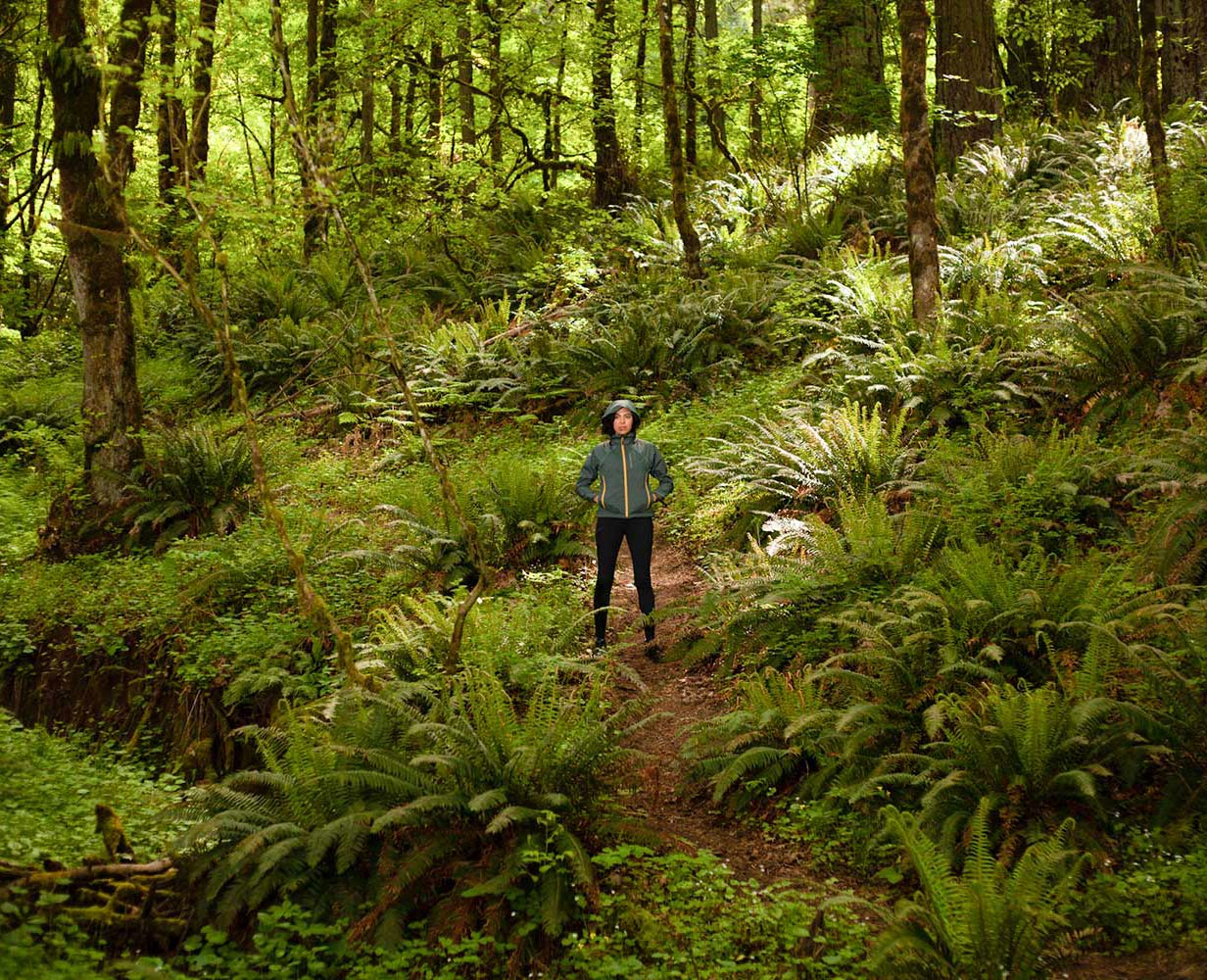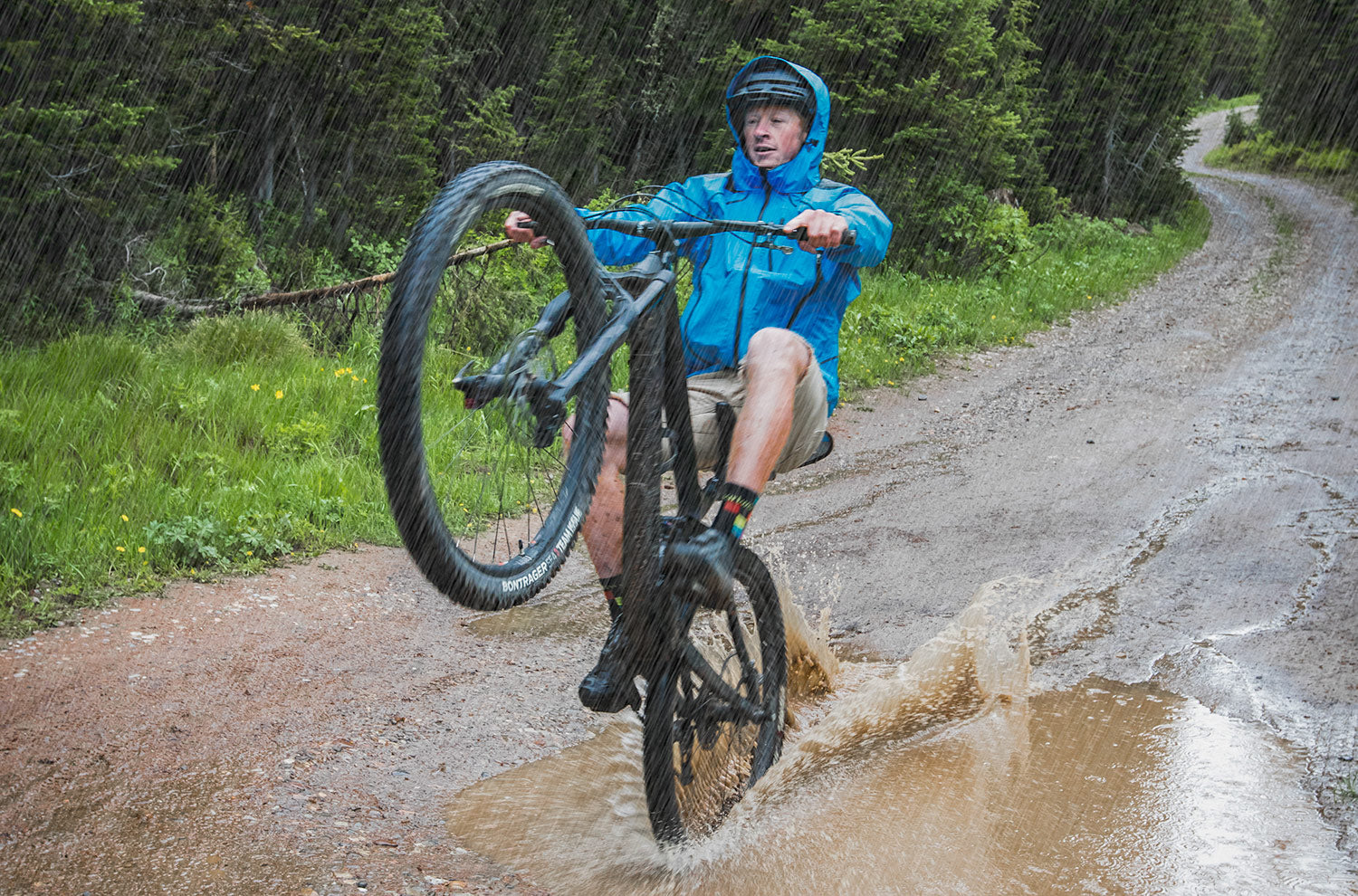
Everything you Need to Know About Mountain Biking in the Rain
Not every day can be blue skies and sunshine. But every day CAN be a great day to go mountain biking... with a little planning and the right gear.
While rain might discourage the average cyclist from leaving the house, mountain bikers are a tough group that won't let a little wet weather prevent them from enjoying time on two wheels. Riding down a trail with raindrops in your face can be a great adventure! But rain is no joke. It can cause serious damage to trails, wreak havoc on bikes, and soak clothes - making for a miserable day.
Here is our guide to mountain biking in the rain: a toolkit to avoid a destroyed trail, an accident, a rusty bike, and a soggy experience.

Don’t Ruin Trails by Riding When it is Too Wet
Before heading out, check which local trails will hold up to being ridden in wet conditions. Depending on your location, your local trails may not be rideable in very heavy rain. Trail advocate and Mountain Bike Hall of Famer Dave Wiens has these suggestions: "This varies greatly by location and in some areas, trails remain closed for days, weeks or even seasonally to protect them from damage. In other areas, trails can be good to go within hours of a heavy rain event. Finally, there are those places that ride fine in the wettest conditions. Always check with the local land manager or mountain biking organization. As a rule of thumb, if you are leaving deep tracks and/or mud is sticking to your tires and frame, turn around immediately and exit the trails." Check with a local mountain bike group or trail advocacy organization if you are not familiar with the trail conditions in your area. Trail damage can happen when wheels cause deep grooves in clay or mud and increase standing water or erosion. Rocky trails with a gravel base or sandy/loamy soils like decomposed granite (DG in dirt lingo) tend to drain quickly, making them more able to stand up to wet-weather riding.
Invest in A Quality Waterproof Jacket
You know the old saying: you get what you pay for. When it comes to staying dry and warm in the rain, it is important to have a high-quality jacket that is (1) fully waterproof and breathable, (2) fully seam taped, and (3) designed specifically for mountain biking. Features to look for include lightweight/packability, vents, 2.5 or 3-layer fabric, and a removable hood. If you ride with a backpack, look for a jacket with reinforced shoulders. Bike-specific jackets are also designed for use in a riding position: longer sleeves, more rear coverage, and better mobility through the shoulders.
Layer Properly
Wear thin layers underneath your jacket. We recommend Merino Wool blends for baselayers, as they wick moisture from the skin, provide great temperature regulation, and are naturally odor-resistant (unlike 100% polyester). Whatever you do, avoid 100% cotton in cold conditions! Once cotton gets sweaty under a waterproof jacket, it stays wet - leaving you cold and clammy.
Throw on Some Mudguards (Fenders)
Mud has a way of wreaking havoc on drivetrains, bearings, suspensions, and riders. One of the best ways to prevent mud from flipping up from your tires and onto you and your bike is with mudguards. You can also keep your bike from being weighed down by accumulated mud by treating the underside of your fenders and frame with a silicone-based water-repellent spray. Minimizing the effects of mud on you and your bike will also minimize the effort required to get cleaned up after the ride. (Please keep in mind the environmental impact of those sprays: if you can handle the extra weight, consider it extra strength training. And some people say cleaning your bike after a ride can be quite therapeutic.)
Waterproof Your Ride
Rain can be rough on bikes. It can corrode chains, causing them to rust or seize. To prep your bike for rain, make sure to use a heavier lubricant on your chains than you would in dry weather. A thin chain-lube can easily wash away. If rainy riding is your every day (looking at you, PNW), consider protecting your cables by running a full cable housing. Lower your tire pressure by a few bars to help with traction. Better traction means fewer spills and reduces the skidding that damages trails.
Protect Your Head

Wearing a helmet is a given in any biking situation, especially when conditions are wet. If your helmet has those ventilation holes we all love for summer, make sure you grab something to keep your head dry: a helmet cover, cap, or waterproof beanie that fits under your helmet. Features to look for on a helmet cover: lightweight, waterproof, breathable, reflective accents for safety, and water-flow management. As we say in the PNW: there is no bad weather, only bad clothing.
Make Sure You Can See
Rain, fog, and spitting mud can all make it hard to see those tree roots and mud puddles that always seem to jump out of nowhere. Wearing a brimmed cap under your helmet is one way to keep the raindrops out of your eyes. Also, use a healthy layer of anti-fog product on your glasses or goggles to prevent blurry glasses mid-ride.
Slow Your Roll
We do not need to tell you that wet terrain means slippery terrain, but we might need to gently remind you to go slower than normal. A lower speed will help you get down a slippery hillside with your collarbones intact. Also, avoiding sudden changes in direction will help you avoid tire slippage.
Know Your Path, and Consider the Terrain
A rainy day is not the ideal time to explore new routes. Stick to familiar paths. Rocky and slate-based soils are best for rainy days, while clay can become very slick when wet. If you can, ride through the woods. Densely packed trees are nature’s umbrella: a good place to be during a downpour. Hitting a wet root at an angle is a sure way to hit the deck, and they are often lurking just out of view under a thin layer of mud. Focus on hitting obstacles like these perpendicularly, and if you can lift the front wheel over the roots by giving a little tug to the bars on the approach, you'll be less likely to have to remove wet clumps of grass from your helmet.
Dry Hands Are Happy Hands
Don’t forget your gloves when dressing for your ride in the rain! Protecting your hands from rain won't just make you more comfortable; it will help you maintain a proper grip on the handlebars and brakes as you maneuver on slick terrain. Gloves that keep you warm and dry while delivering full dexterity are worth their weight in gold.
Cover Your Seat
You should never leave your bike outside in the rain. But if it is inevitable, make sure you cover your seat with a plastic bag. Your backside will thank you during your next ride.
Ride Home Safely
After the trail fun has ended, make sure you are visible to the cars that are sharing the wet road with you. A clip-on rear flasher and reflective accents on your clothing could literally save your life.
Wash Your Bike ASAP
Maintain your bike’s good condition by keeping it clean. As soon as you get home, break out the garden hose and spray down your bike. It is much easier to clean it off immediately when the mud is still wet than to wait until the mud is caked on. At the very least, spray down the tires, chain, cassette, derailleur, handlebars, and frame to get the mud off (avoid blasting water directly at bearing and suspension seals). Prevent rust by toweling off all parts of your bike before putting it away. While you have the hose out, you might want to spray down your clothes as well. This will prevent clumps of dirt from getting lodged in your washing machine. And contrary to popular belief, it is good to wash your rain jacket: waterproof/breathable fabrics perform better when they are clean.
Embrace the Rain
Mentally fighting the rain will only make you cranky. If you’re mountain biking in the rain, you will be wet and muddy. Accepting this fact before stepping out the door will allow you to enjoy your ride with a sense of adventure. Now get out there and smash those puddles, wipe the mud from your brow, and enjoy your ride! You won’t regret it.
Pro tips:
- If it's not too cold or your trail has lots of climbing, consider one less layer on your arms than on your chest/core. Arms need to shed heat.
- Brake pads wear WAY faster in the wet. Carry a spare pair in your bag, or consider running harder metallic pads in the winter and the softer grippier resin pads in the summer.
- Front fenders keep mud splatter off your face, which is a good thing for the sake of being able to see where you are going. Rear fenders keep mud splatter off the people behind you. Use with discretion, depending on how much you like your riding buddies...
- Tire choice makes a difference. Think knobs. Fresh sharp tread increases grip in the corners, but tire width can be just as critical. Wider can give you a bigger contact patch, but narrower increases contact pressure. If you have lots of downhill cornering, go wider. If you have lots of technical climbing in slippery muck, go narrower. Ask the local shop what they ride on the trails.
- Keep a couple of pairs of unopened hand warmers in your pocket or pack, just in case you get stuck and have to wait out the weather or call for a ride. Oh, and if you do have to call a friend for a ride, ask them to bring a towel and trash bag: you don’t want to ruin the upholstery in their car when they are doing you a favor.
